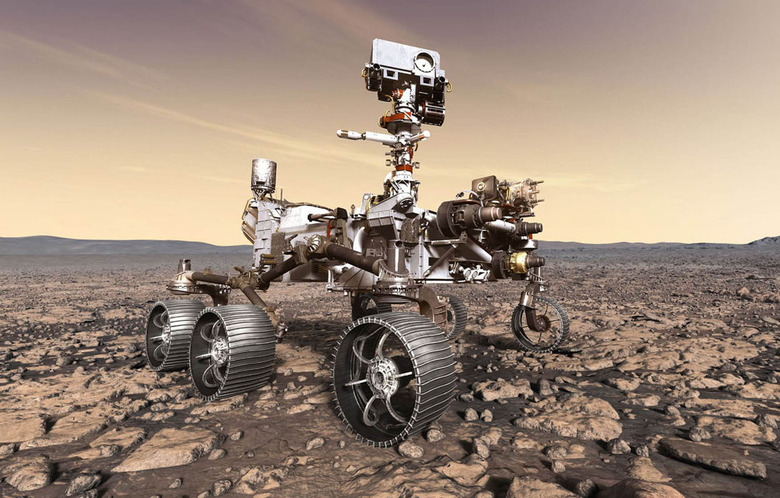We're Now Just One Month Away From The Perseverance Rover's Landing
- After several months of traveling through space, NASA's Perseverance rover and other science instruments are now just one month away from their landing date on Mars.
- The landing, which is slated for February 18th, will see the Perseverance rover and Ingenuity helicopter arrive on the Red Planet.
- The mission is expected to last many years, as NASA's rovers have consistently proven to be durable and long-lasting, even in the harsh conditions of Mars.
Last year wasn't a particularly great year for NASA. The space agency accomplished a lot, but it also had to delay a number of projects due to the coronavirus pandemic. One mission that managed to stay on track was the Perseverance rover and its trip to Mars, which was launched at the last possible moment. Now, after months of traveling through space, the rover and its tiny helicopter companion are nearing the finish line of their journey.
The landing date for the mission is February 18th. Incredibly, this date was decided long before the launch date was even set in stone. NASA is quite talented when it comes to logistics so it tweaked the spacecraft's speed other particulars to ensure that it would land on the expected date regardless of when it left Earth.
The mission has many lofty goals, including collecting samples of the Martian surface and preparing them to be collected by future missions that will send the material back to Earth for study. Additionally, the tiny Ingenuity helicopter that is currently strapped to the belly of the rover will attempt the first powered flight on another world, which is incredibly exciting.
Via NASA:
Perseverance lands Feb. 18, carrying new science instruments and technologies, including the Ingenuity Mars Helicopter on its belly. Perseverance will use a drill on the end of its robotic arm to capture rock and regolith (broken rock and dust) samples in metal tubes, which will be deposited on the surface of Mars for a future mission to collect and return to Earth. The rover will seek signs of ancient life on the Red Planet as a primary goal.
But before any of that exciting stuff can actually happen, the rover has to stick its landing. That means that the rover's capsule and parachute system must operate flawlessly in order to ensure a soft landing in the Jezero crater on Mars, which is NASA's targeted landing zone.
Assuming that all goes well, the rover will get to work shortly after landing and ensuring that all of its systems and instruments are functioning as intended. The helicopter, which is something of a proof of concept rather than an actual scientific tool, will be capable of flying on Mars for only a short while before its internal battery is drained, but assuming that it managed to travel in the relatively thin Martian atmosphere for any meaningful distance, it will surely be a sign of things to come and could lead to future missions where airborne drones explore huge areas of Mars or other worlds much more rapidly than a rover is capable of.
